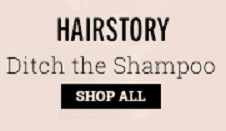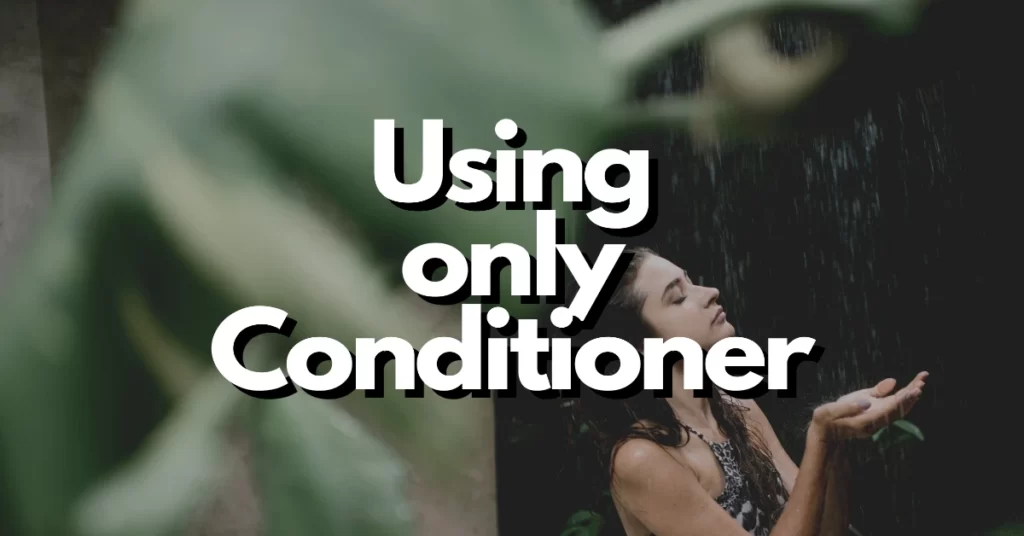The no-shampoo or conditioner-only washing method has gained popularity as a potential alternative to traditional hair care routines.
In this blog post, we will explore the concept of stopping the use of shampoo and solely relying on conditioner for cleansing and maintaining your hair. By understanding the benefits, potential drawbacks, and suitable hair types for this method, you can make an informed decision about whether it is suitable for your needs. Join us as we uncover the possibilities and challenges of adopting a shampoo-free hair care routine.


The Concept of Co-Washing: Understanding the No-Shampoo Method and Using Conditioner Only
Co-washing, or conditioner washing, has gained popularity as a gentle and moisturizing alternative to traditional shampooing. By skipping shampoo and using conditioner only, you can cleanse your hair while retaining its natural oils. Co-washing is especially beneficial for individuals with dry or curly hair, as it helps maintain moisture and enhance the natural texture.
To co-wash effectively, choose a silicone-free conditioner and massage it into your scalp and hair, focusing on the roots and ends. Rinse thoroughly to remove any product buildup, and follow up with a lightweight leave-in conditioner or styling product. With regular co-washing, you can achieve healthier, softer, and more manageable hair.
Pros and Cons: Weighing the Benefits and Limitations of Eliminating Shampoo from Your Hair Care Routine
Eliminating shampoo from your hair care routine and embracing co-washing has its advantages and considerations. One of the major benefits is that it helps retain the hair’s natural oils, leading to improved hydration and reduced dryness. Co-washing can also minimize frizz, enhance curl definition, and promote overall hair health. However, it may not effectively remove heavy product buildup or cleanse oily scalps.
Additionally, some individuals may experience scalp issues or find that their hair feels weighed down. It’s important to consider your hair type, scalp condition, and personal preferences when deciding whether to adopt a co-washing routine. Experiment with different products and techniques to find the balance that works best for you.
Adjusting to Co-Washing: Tips for Transitioning to a Shampoo-Free Hair Care Routine
Transitioning to a shampoo-free hair care routine can take some adjustment. Start by gradually reducing the frequency of shampooing and incorporating co-washing into your routine. Begin with co-washing once or twice a week and gradually increase as your hair adjusts. During the transition period, you may experience some scalp oiliness or residue, but this should improve over time.
Experiment with different co-washing products to find the one that works best for your hair type and texture. Additionally, consider using a clarifying shampoo occasionally to remove any product buildup. Remember that each individual’s hair is unique, so be patient and give your hair time to adapt to the new routine.
Personalizing Your Routine: Finding the Right Balance Between Shampoo and Conditioner for Your Hair Type
Finding the right balance between shampoo and conditioner is essential to personalize your hair care routine. While co-washing can be beneficial for many, it may not be suitable for all hair types and needs. Individuals with oily scalps or those prone to product buildup may still benefit from occasional shampooing to thoroughly cleanse the hair and scalp.
On the other hand, individuals with dry or curly hair may prefer to co-wash more frequently to maintain moisture and enhance their natural texture. It’s crucial to listen to your hair’s needs and adjust your routine accordingly. Consider consulting with a hair care professional or stylist for personalized advice based on your specific hair type and concerns.


Conclusion
The decision to stop using shampoo and rely solely on conditioner is a personal one that depends on various factors, including hair type, scalp condition, and personal preferences. While this method may work well for some individuals, it may not be suitable for others. It is crucial to listen to your hair’s needs and adapt your hair care routine accordingly.
Whether you choose to go shampoo-free or stick to a traditional routine, maintaining healthy and beautiful hair is ultimately about finding the approach that works best for you.

